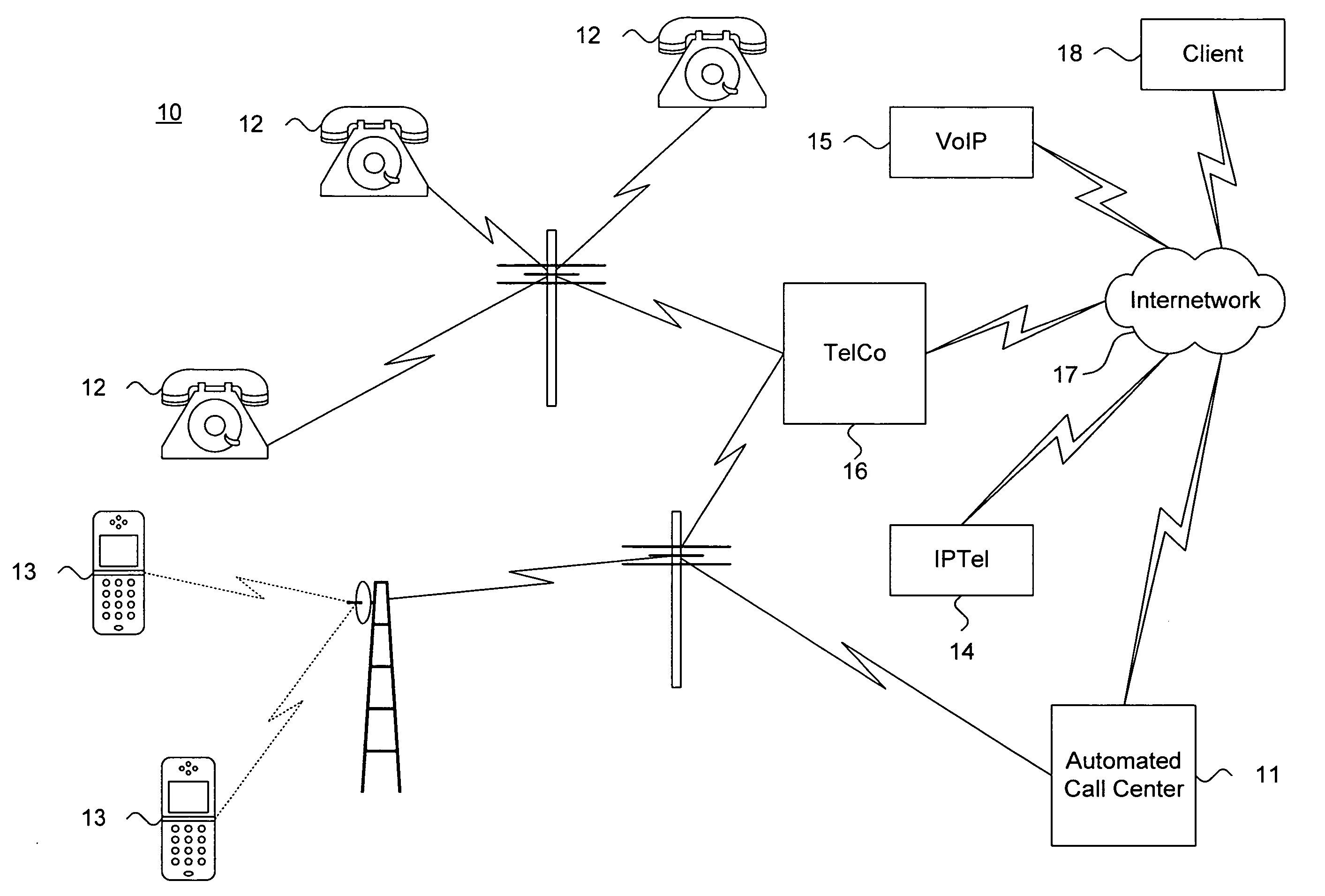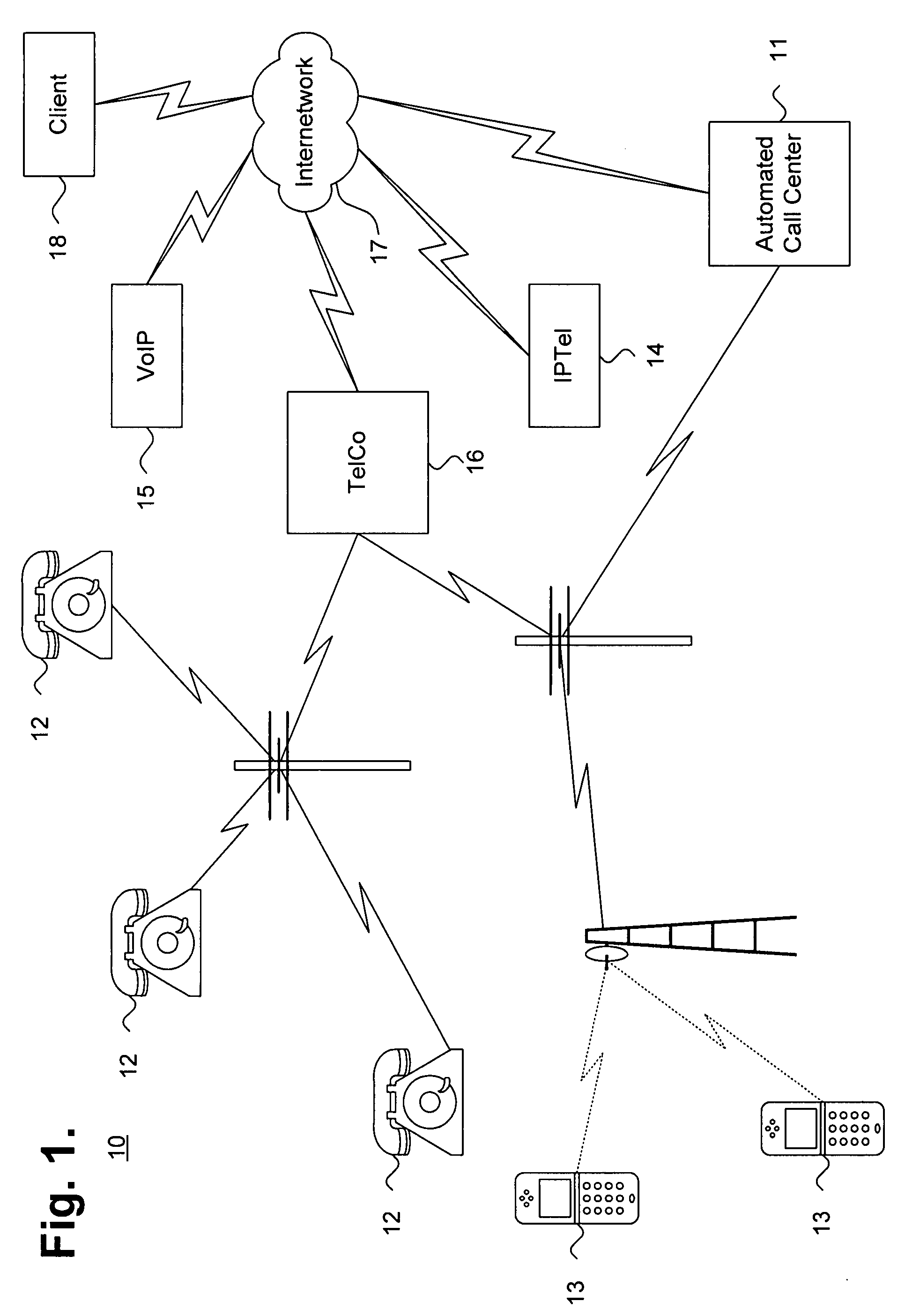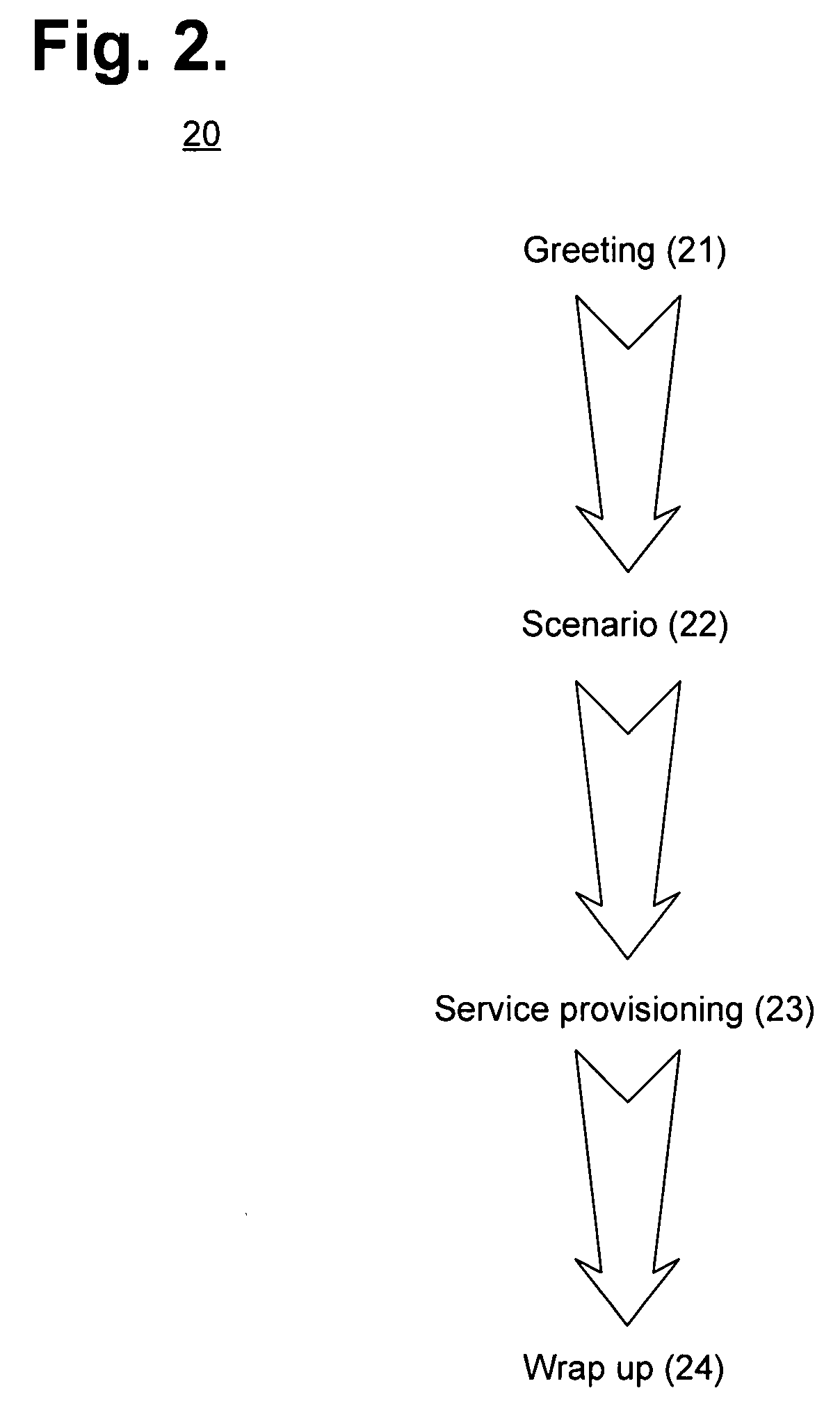System and method for providing a multi-modal communications infrastructure for automated call center operation
- Summary
- Abstract
- Description
- Claims
- Application Information
AI Technical Summary
Benefits of technology
Problems solved by technology
Method used
Image
Examples
Embodiment Construction
System for Providing a Message-Based Communications Infrastructure
[0048]FIG. 1 is a functional block diagram showing an automated call center operational environment 10. By way of example, a multiplicity of users call into an automated call center 11, preferably through telephonic means, which can include voice or text messaging media. The telephonic means include Plain Old Telephone Service (POTS) 12, cellular and satellite telephones 13, Internet telephony (IPTel) 14, Voice over IP (VoIP) 15, short message service (SMS) text messaging, and other forms of telephony and voice-based communications, as would be recognized by one skilled in the art. Users could also call or interface to the automated call center 11 through data transmission means, such as an internetwork 17, including the Internet. The call can include voice communications, text messaging, or a combination of voice and text communications.
[0049]Independent of call origination, each user call is routed through a telepho...
PUM
 Login to View More
Login to View More Abstract
Description
Claims
Application Information
 Login to View More
Login to View More - R&D
- Intellectual Property
- Life Sciences
- Materials
- Tech Scout
- Unparalleled Data Quality
- Higher Quality Content
- 60% Fewer Hallucinations
Browse by: Latest US Patents, China's latest patents, Technical Efficacy Thesaurus, Application Domain, Technology Topic, Popular Technical Reports.
© 2025 PatSnap. All rights reserved.Legal|Privacy policy|Modern Slavery Act Transparency Statement|Sitemap|About US| Contact US: help@patsnap.com



